TRAINING NOTEBOOK ❘ By ALEXANDER DEGNAN
The fire community is flush with excellent and innovative rescue maneuvers for firefighters performing in difficult rescue situations, whether it is establishing air for a larger victim, lowering a victim from a window, or getting a victim up and out of an immediately dangerous to life or health environment easily. When it comes down to it, there is no substitute for additional staffing. With a victim (civilian or firefighter) down in the fire environment, having additional hands available to remove the person is superior to any involved/semi-intricate removal scheme. As usual, getting to victims early, communicating it over the air, summoning resources, and effecting the rescue are almost always the way to go.
Unfortunately, there are instances where the interim between setting up a removal and an actual extrication could cost a person his life. These are the “in-between” areas where quick decisions must be made with what is readily available to you. The methods explored in this article are not ideal or superior, but they may be essential under duress. In a manner similar to that of setting up mechanical advantage systems with your rope, these moves are derived from necessity.
- Rapid Intervention Alternatives
- Training Minutes: Ladder High-Point Removal
- Training Minutes: High-Point System for Firefighter Rescue
Maneuvers for Success
Ladder high point lower. This time-tested move is an excellent way to establish a high point with a ground ladder to lower a victim from a window. Here, place a ground ladder above the window for a rescue while a firefighter weaves a rated rescue rope under the ladder’s bottom rung, over the next rung, and repeats for a couple of rungs. He then ascends the ladder, affixes the rope to the top, and passes a bight through the top rungs to the rescuer in the window. The rescuer in the window then affixes the rope to the victim and assists/passes him out the window, and the rescuer outside (now at the bottom of the ladder) uses the tension created between the rungs to lower the victim in a controlled manner (photo 1); this basically mimics the action of a brake bar rack (photo 2). It is an incredibly effective and generally speedy way to get a victim to the ground—unconscious or otherwise—who cannot be lowered on the ladder itself. A prime example would be a larger and unconscious victim—the victim may slide off the ladder, the firefighter on the ladder may not be able to contain him, and so on. With this type of rescue, you can easily control a great deal of weight.
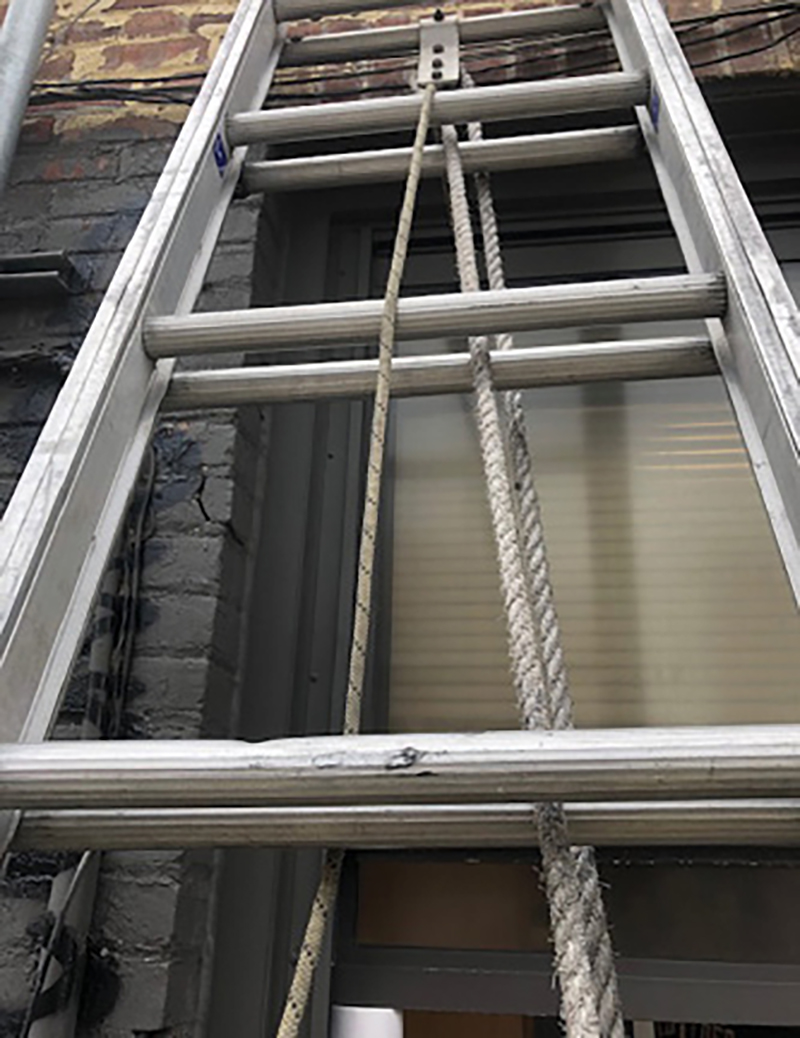
(1) Photos by author.
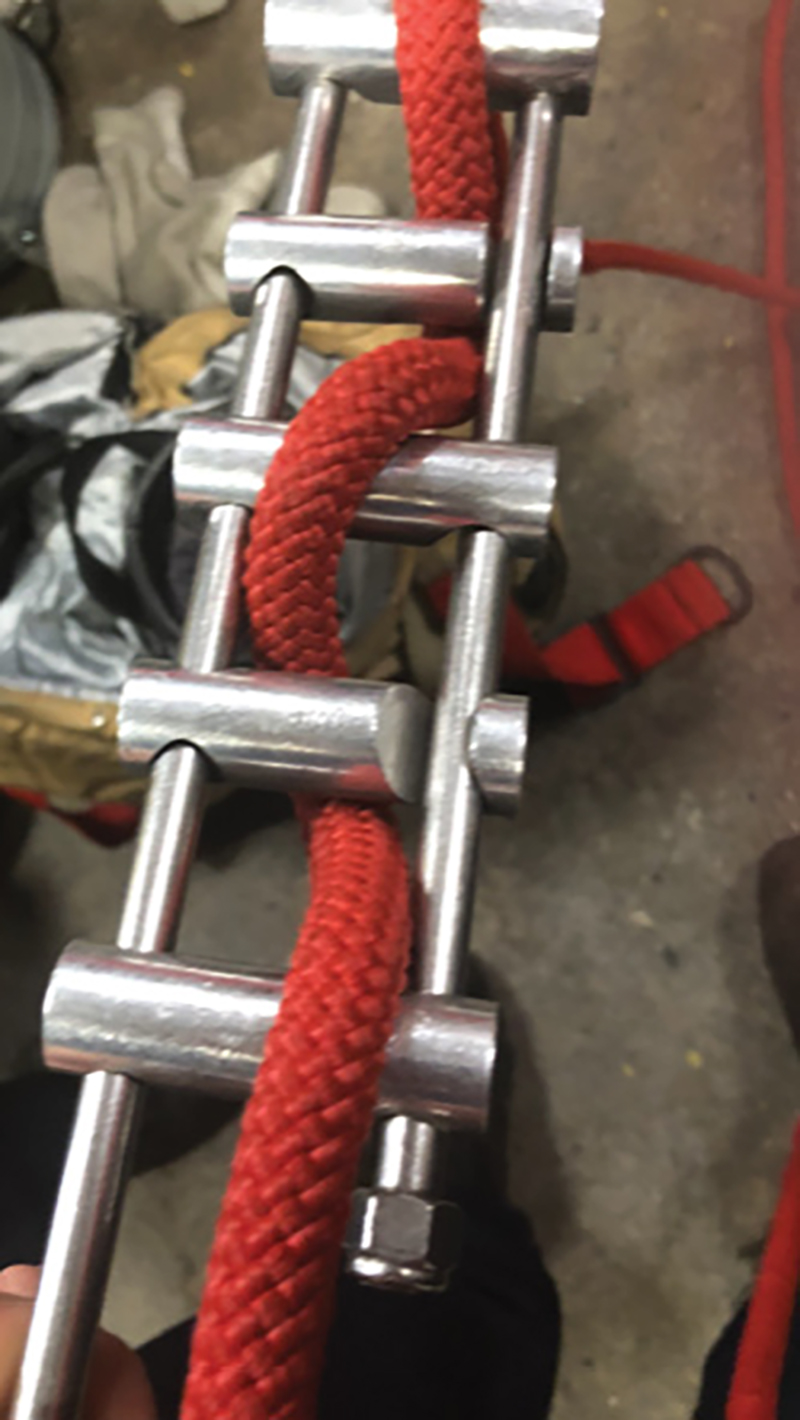
(2)
Where we run into trouble is the retrieval and setup. It is not likely [at least in the Jersey City (NJ) Fire Department (JCFD)] that a rescue rope is just sitting at the command post ready to go and a ladder is properly placed for such a maneuver. Furthermore, while the rescue does not involve hardware, it requires a tensionless hitch, an additional carabiner, and a means of victim wrapping; these are all things that can take up valuable time. If the time is allotted by condition alleviation, take it! If not, you can modify this move with what nearly every firefighter carries in his pocket: personal bail lines. Almost every firefighter has a personal bailout system that consists of at least 50 feet of rated rescue rope, some type of descent control device, and a two-point seat harness. (JCFD currently uses a system with 50 feet of 8-mm rope and a lever-controlled descender.) Whichever bailout system your department employs, this rescue can be put into play if the conditions call for it.
Requirements: To set up a ladder high point lower with a bailout line, consider a few things. First, the lowering rescuer cannot afford to start weaving the ladder rungs at the bottom and proceed upward; he simply does not have enough rope. Additionally, the lowering rescuer cannot descend all the way back down the ladder to lower; he will have to do it from the ladder itself. For this reason, it is important to keep the ladder angle aggressive and solidly footed to avoid “kick out.” Also, in keeping with the speed of execution, the rescuer will not wrap the top rung and pass a bight through it. Lastly, the rescuer from the ladder will be working from the back end of his line.
Procedure: As stated above, if an instance like a deteriorating environment with an unconscious victim exists and this method of rescue is to be achieved, we must be able to do it quickly. For the sake of comparison, this may be an instance where the firefighter inside the window is considering lowering the victim with his own bail device and then exiting himself, but it has not yet progressed to that point. For this to work, a ground ladder needs to be quickly placed above the window and the lowering firefighter rapidly ascends. When the firefighter reaches a point on the ladder just below the window, he will pull the back end of his rescue rope from his pocket and weave it under the rung (photo 3). He should then go over the next rung, under the following rung, and perhaps over one more. The firefighter then needs to pull the running rope up over the top rung and throw it into the window of the firefighter waiting with the victim (photo 4). The firefighter then descends quickly to the area where he first weaved the rope, “leg locks” himself, and pulls the slack back through. It is important that the firefighter stays below the window for the lower because he needs to be underneath the environment that may be shooting through the window to maintain good visual and control.

(3)
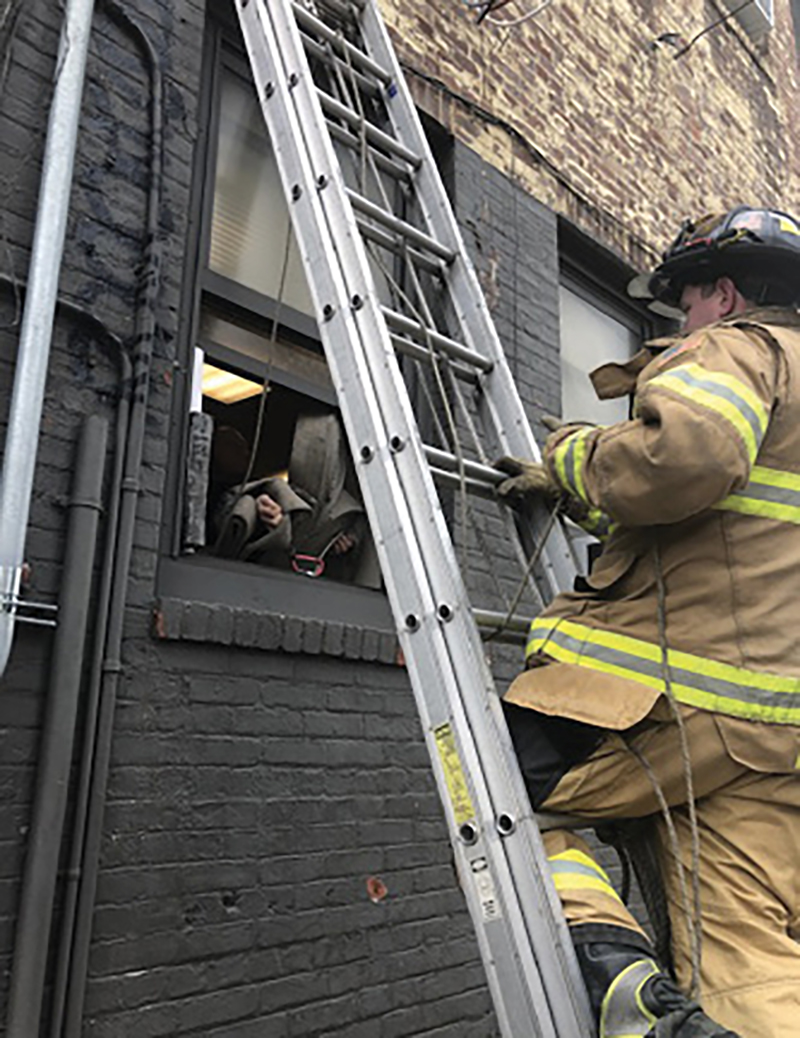
(4)
Meanwhile, the firefighter in the window then wraps the victim under the arms and across the chest with the rope that was passed into the window and either ties it to itself or secures it with a carabiner. (If a carabiner is available and affixed to the end of the rope beforehand, it will pay big dividends, but it is not required.) The firefighter then calls to the rescuer on the ladder to retrieve slack and slowly pass the victim out of the window into the space between the building and the ladder (photo 5). With the line now taut and the rescuer keeping tension by pulling his arm upward toward the window, he then begins to lower. The victim can be lowered all the way to the ground if the rope and space allow or to a lower window and is then pulled in. Repeat this process, if needed. The rescuer on the ladder simply needs to “rewind” his rope through the rungs, pulling it “up” into the window, and the firefighters in the window start the process again.
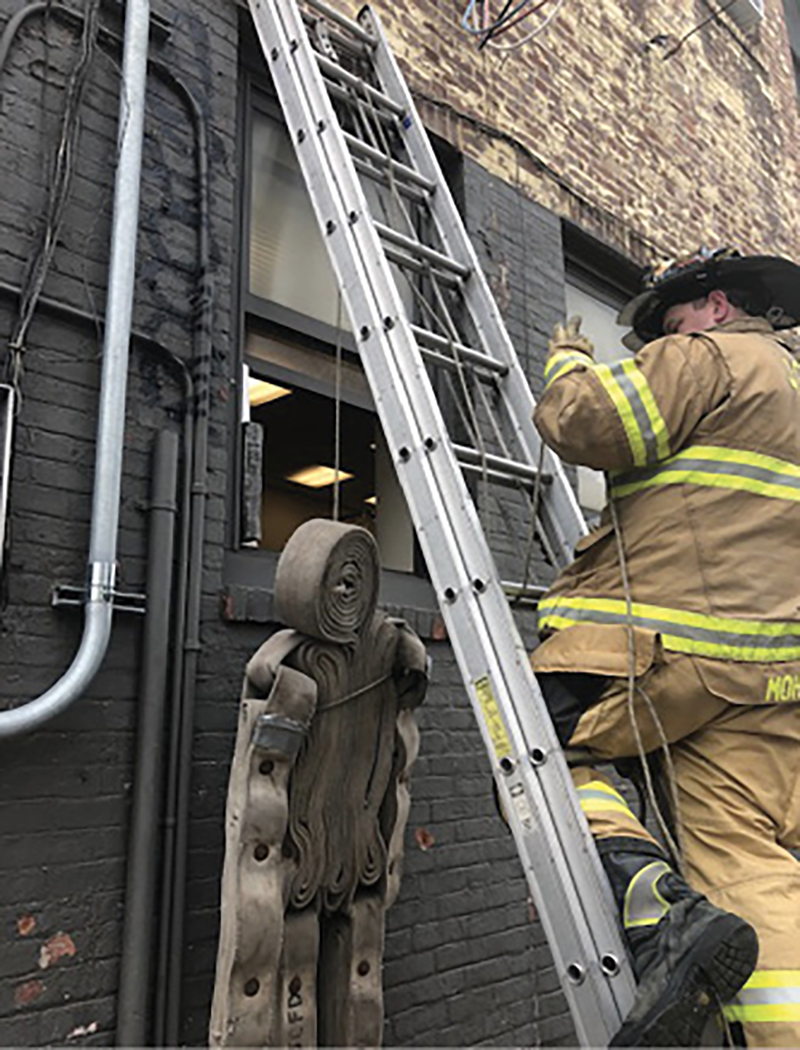
(5)
It is worth noting that the 8-mm rope cinched tightly around a person’s chest is incredibly uncomfortable, to say the least. So, exhaust all efforts to avoid “shock loading” the victim from slack as he is passed out of the window. Also, if this is an instance where firefighters need to exit quickly, pull down the ladder base outward and placed at the sill as soon as the victim is down, and the firefighters can go. If this is an instance where firefighters need to bail, they can do so once the victim is “on the rope.” Again, speed and what you have available to you in your personal protective equipment will dictate this need.
Backboard victim raise. Another excellent maneuver—especially in a “Denver” rescue-type situation—involves a down firefighter or civilian near a window and the difficulty that can be encountered getting that unconscious weight up and out of the window quickly. An often-employed method uses a backboard with a loose piece (generally a ½-inch rope) passed through two holes in the backboard such that a bight exists on the other side. The victim is then laid flat on his back near the window, and the backboard is placed on top of him. The rope is then passed over the firefighters’ heads and under his arms, and the two loose ends are passed out the window to waiting members. As the ends are pulled, the rope draws taut around the victim, the backboard provides the needed rigidity, and the victim is pulled upright and passed out the window face-first. It is an excellent move, a neat and generally speedy way to get an unconscious victim out. In fact, rapid intervention equipment at the command post should have a backboard ready in such a fashion that it does not impede the use of the board for other rescues.
Again, a problem can arise in the lag time between calling for the resources, retrieving the resources, and setting and completing the rescue. Between the mayhem of radio transmissions, pinning down your location, and a diminishing air supply, any number of factors can contribute to a slower rescue-reflex time. Similar to the above, a rescuer can mirror this rescue move with his rescue rope and anything in the area that will provide needed rigidity. From a closet door to a piece of debris to dual pike poles, as long as the rescuer can affix his rope to both the victim and the modified backboard, he can achieve rescue.
Procedure: For this example, let’s assume that, based on subsequent calls over the radio for aid, water, and air, a two-member team of firefighters is working in a small space to get a victim up to a window on the first floor. There is little leverage provided, and anyone who has executed a Denver drill is familiar with its difficulty. However, if a door or even a good piece of wood is available, the rescuers can achieve a modified backboard raise. To do so, place the victim on his back with his feet at the base of the window. Then, have one rescuer expose his pocket rescue rope. Next, in or around the middle (it does not have to be perfect), he can make two large half hitches, loops, or a clove hitch (for tension only, so the exact hitch tied is up to the rescuer) (photo 6). These hitches are then passed over the piece of wood and the “board” is laid on top of the victim (photo 7). The loose hitches are then passed over the victim’s head and under his arms. Next, pass out those loose ends to opposite corners of the window (photo 8). Be mindful that one section of rope will be the actual end and the other will be running back toward the rescuer’s pocket.
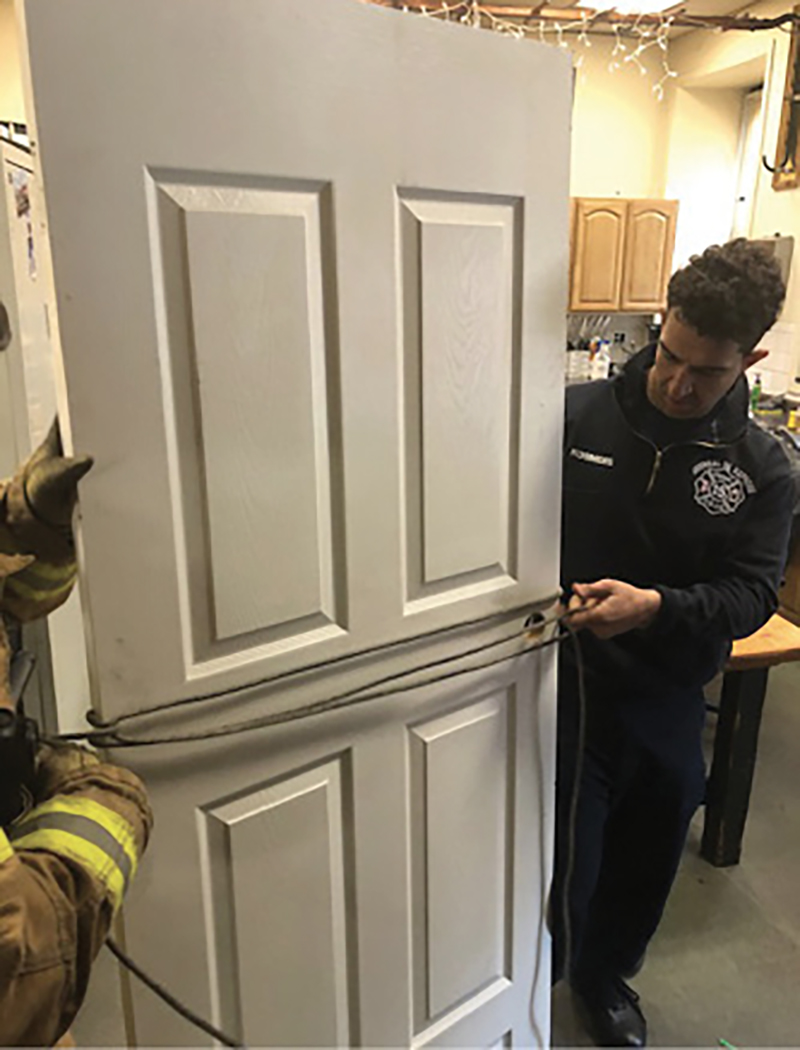
(6)
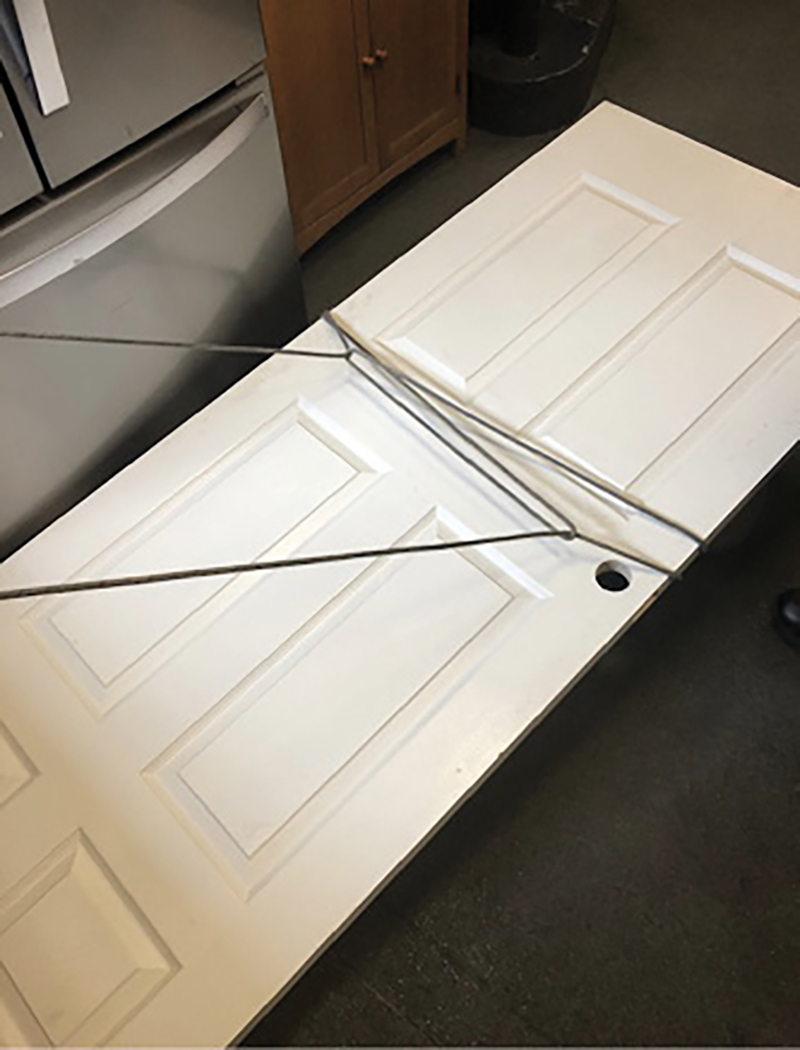
(7)

(8)
In an ideal situation, additional personnel will be on the exterior, from either the ground or a ladder, to pull the ends of the rope. If this is not possible, one rescuer can exit the window to the ground or ladder and a second rescuer can position at the head of the victim. On his order, the rescuer, who is holding the two ends of rope, pulls, and the rescuer inside assists in standing up the victim up (photo 9). Now, he will grab the victim’s feet, “flip” him upward, and pass him out the window face-first.
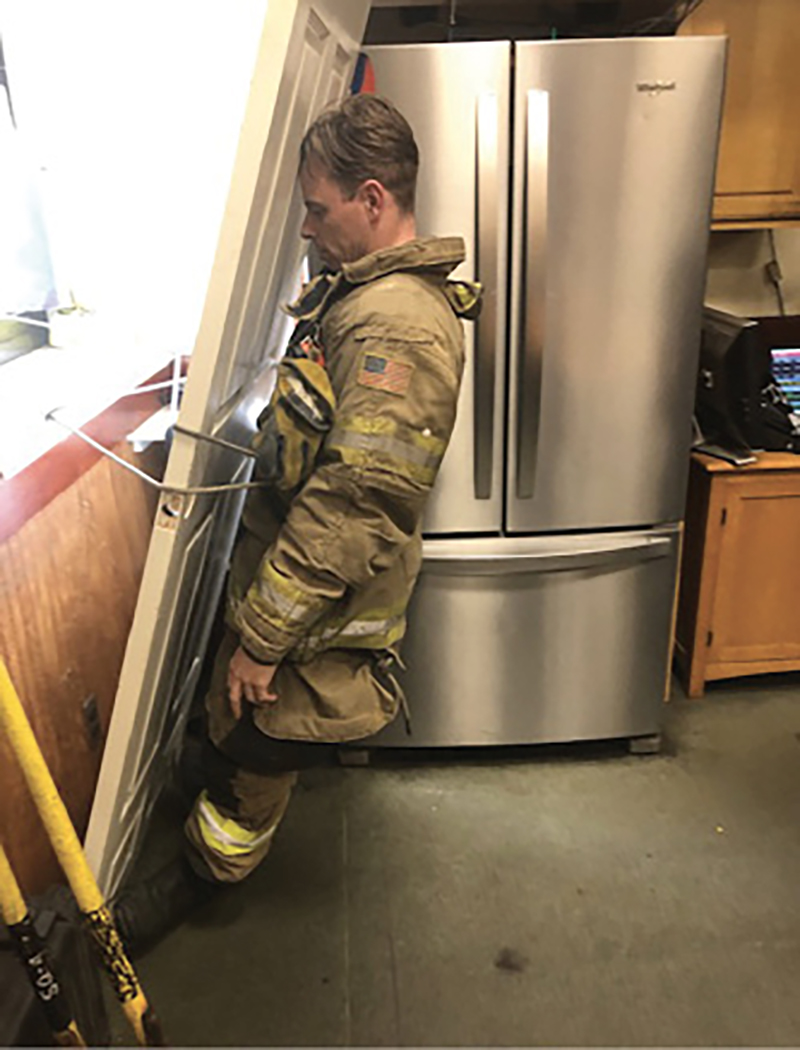
(9)
This process, although not as good as retrieving the backboard, is faster and more readily accessible. It may also be slightly superior to making a modified “ramp” with a door simply because it makes the victim rigid to the door. Anyone who has tried to push a person up such a ramp knows that pushing or raising dead weight can be arduous and awkward. Additionally, it can be executed with two pike poles. Rather than placing the victim on top of pike poles and risking him “flopping” off in a raise or push, secure the victim to the pole and pull upward. Again, place the victim at the base of the window on his back with the poles on top (photo 10). For safety’s sake, place the “D” handle at the victim’s head and the hook end into the base of the wall (photo 11). Secure the victim under the arms such that he is lashed snuggly to the poles. In a fashion similar to the above method, pass the two loose ends of rope out of the window (photo 12). When the haul is initiated, the firefighters on the inside can stabilize the victim, grab the bottom of the pike poles, and pass the victim up and out of the window (photo 13). With no other options, this work very well.
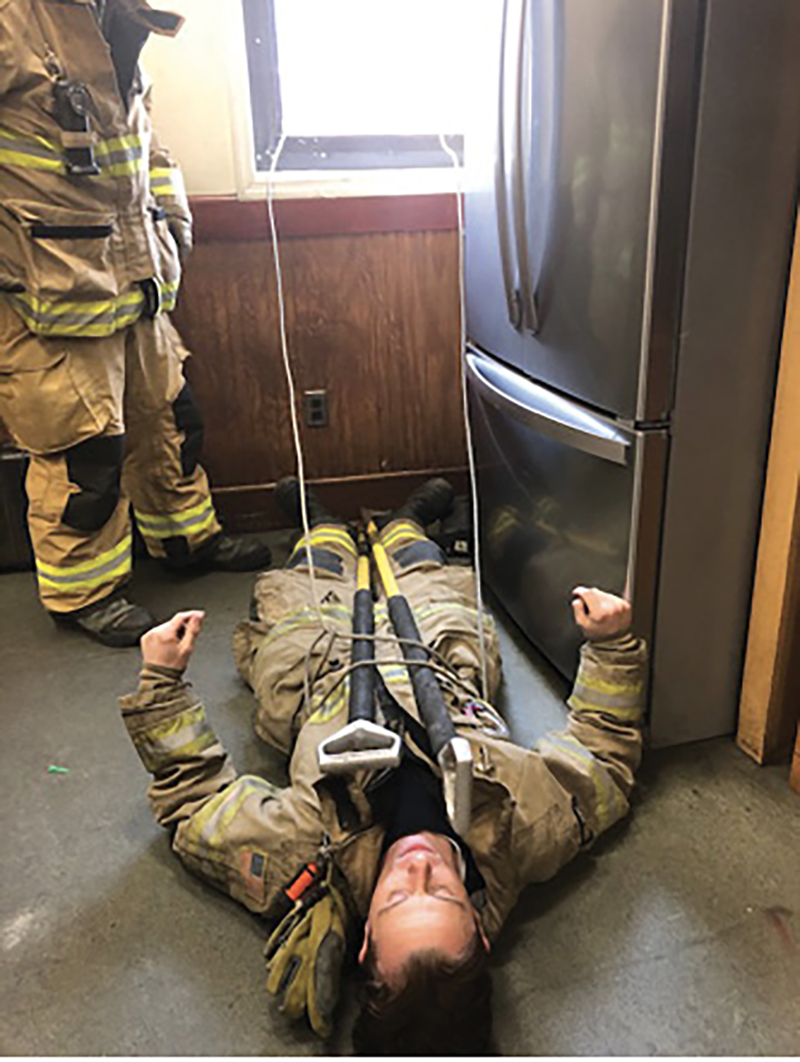
(10)
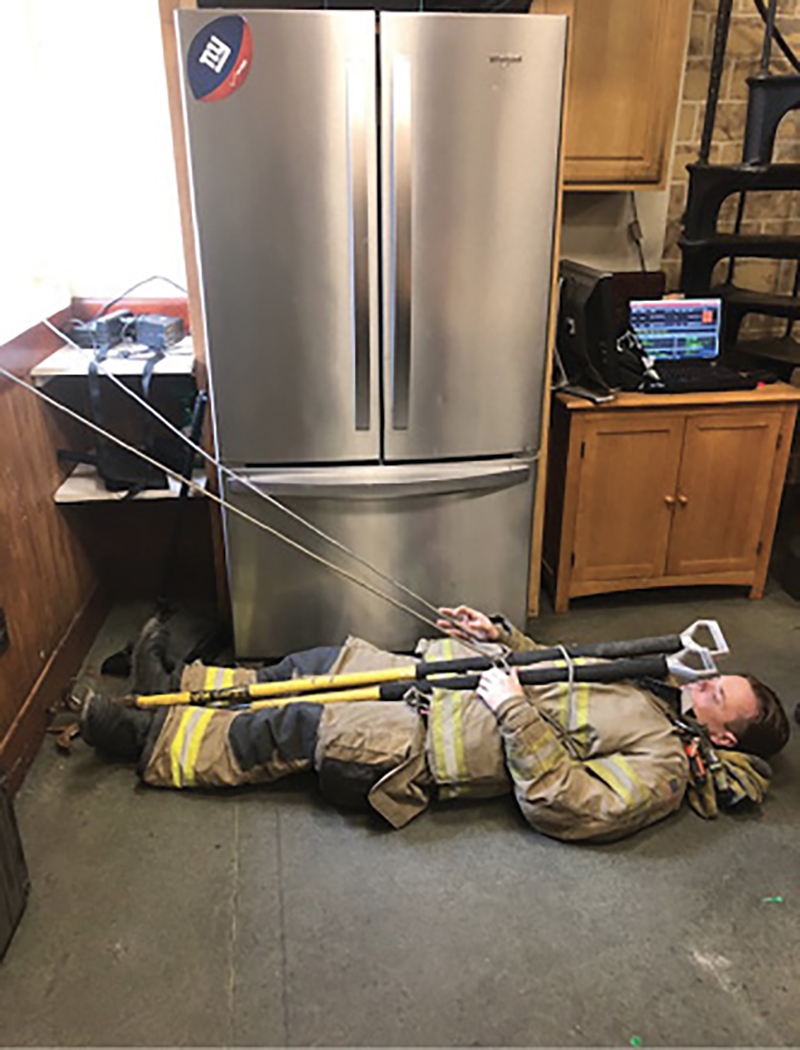
(11)
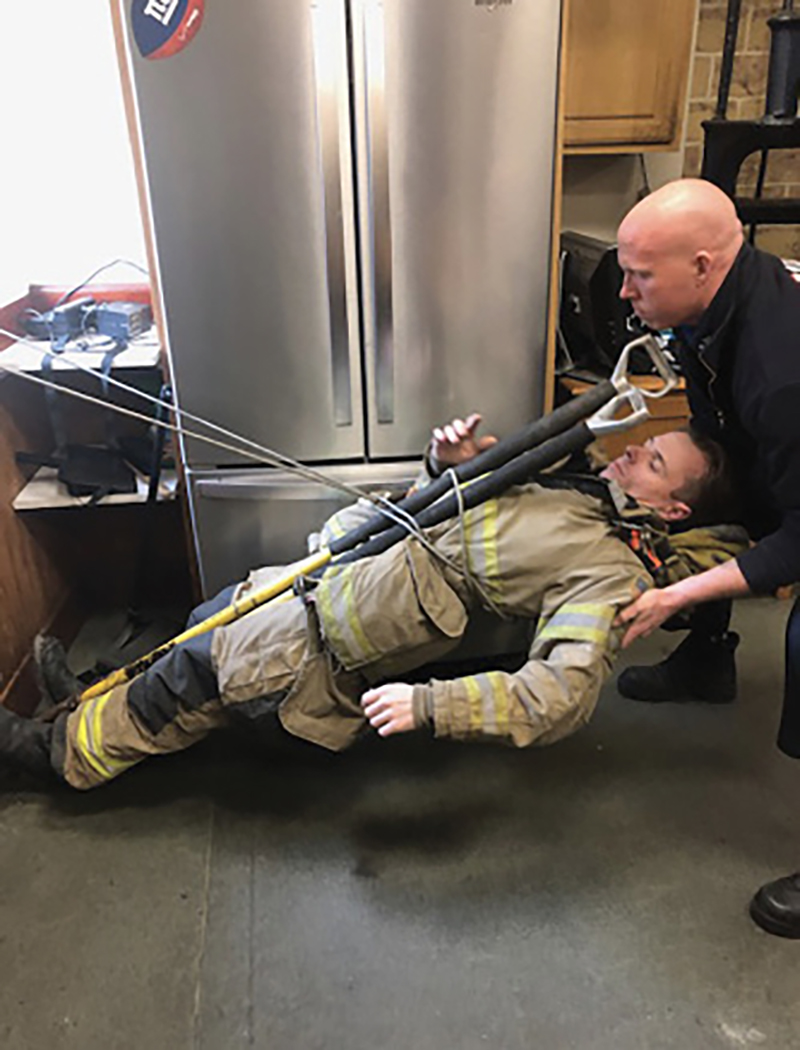
(12)

(13)
Things to Keep in Mind
These are just two examples of rescues that we can initiate and, ultimately, execute in a speedy and an efficient manner with what is in our pockets. It is important to know that, in addition to these moves being less than ideal, we should abandon them for superior ones if the needed resources arrive quickly. You must be very responsible and show great restraint when using pocket ropes for rescues, even more so than when you are using the rope simply to move someone.
From lowering victims to mimicking time-tested rescues, understand that ingenuity with our ropes is born out of the speed needed to make the rescue in today’s rapidly deteriorating environments. If the need for this all-out speed is not there (the environment is sustainable), then there is no need to shortcut a rescue or removal. Don’t lower a victim out of the window on your bail line if you can wait for and get him a ladder. Also, do not strain a victim against a piece of scrap wood if the environment is tenable and you can pass a rapid intervention team air pack into the window and protect in place while a better method is employed.
When deciding to compromise your lifeline in any way, the person outside the environment should remain the first choice. That said, keep you bail lines in good order, inspected, and ready to deploy for both yourself and those you are charged to protect.
ALEXANDER DEGNAN is an 18-year member of the Jersey City (NJ) Fire Department (JCFD), where he is the captain of #618 Squad Co. 4, a position he has held since 2015. Prior to his captain’s position, he was a 10-year firefighter with the JCFD’s #1013 Squad Co. 4.

